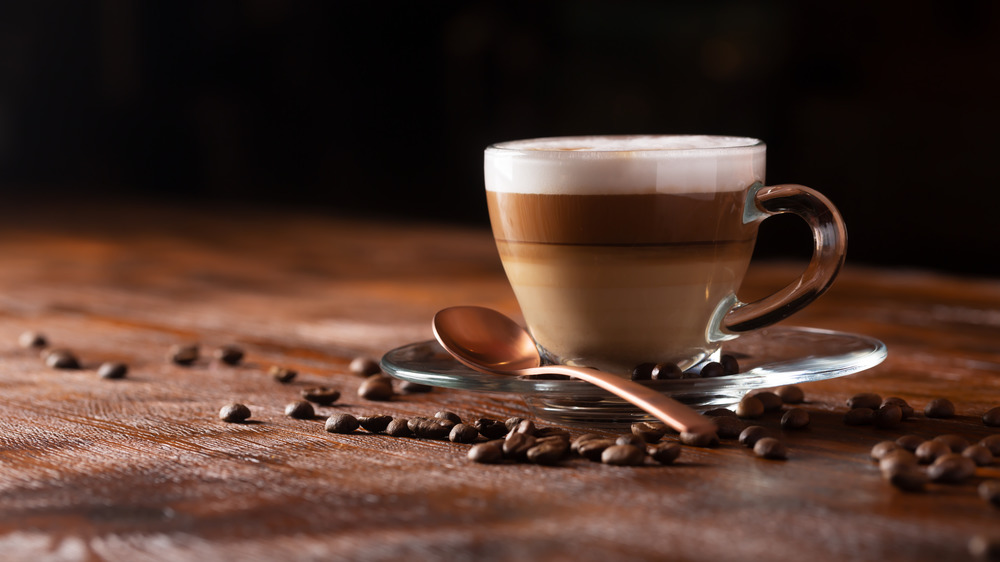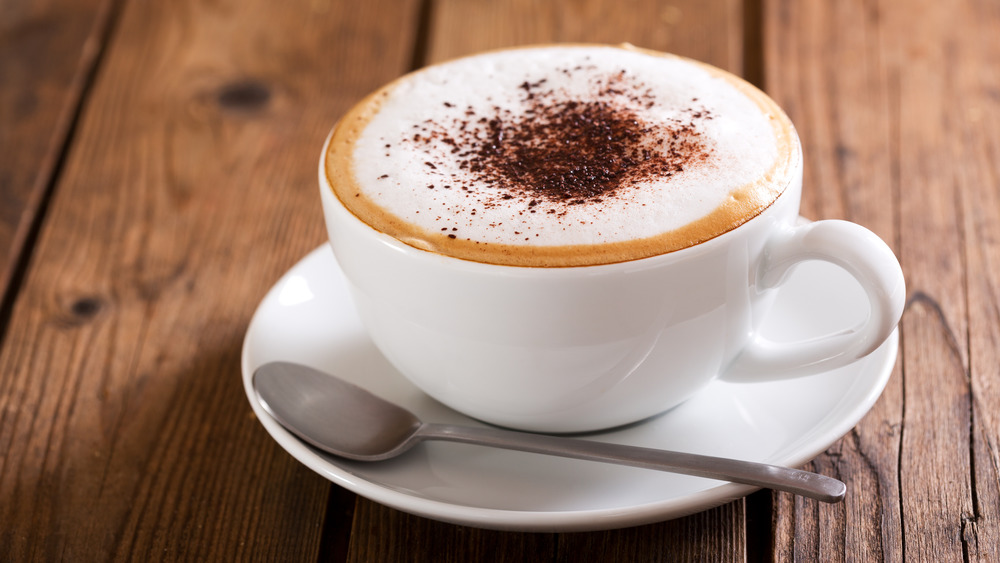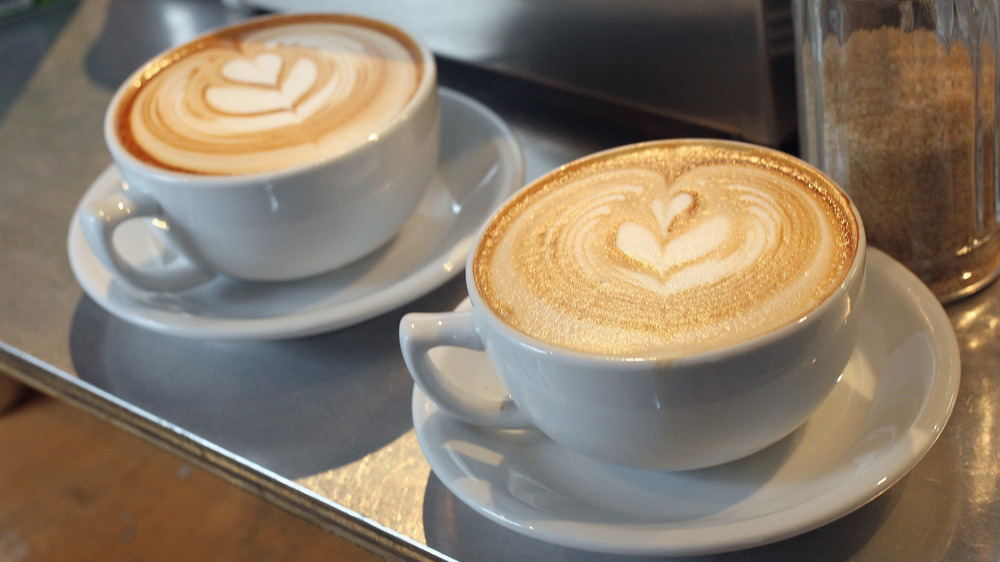The Real Difference Between A Flat White And A Cappuccino
Have you ever found yourself in a coffee shop, staring blank-faced at the menu board, trying to gauge what exactly each of the dozens of options even were? Then, in a panic, you tell the barista, "Um, a flat white, please," because it sounds nice? Sure, whatever you order is probably delicious (hello, what coffee isn't?). But admit it: We've all been there.
Today, we're going to break down exactly what the difference is between two classic coffees: a flat white and a cappuccino.
To start off, we do have some unfortunate news — Starbucks has been lying to you about your coffee order (well, kind of). Caffeine experts like Coffee Bros say that Starbucks is notorious for taking traditional coffee drinks and adapting the ingredients to whatever ratio it prefers. So, for the purpose of this article, keep in mind that we're comparing an authentic flat white to a classic, coffee shop cappuccino.
A cappuccino is strong and frothy with a balanced base
Chances are, you've encountered one of these frothy coffees at least once in your life, since cappuccinos have graced the earth for far longer than flat whites have. According to HomeGrounds, the cappuccino dates all the way back to Viennese coffee shops in the 1700s. Back then, ordering a "cappuccino" meant asking for a hot coffee with cream and sugar. Nowadays, any cappuccino should include espresso with both frothed and steamed milk.
Coffee Bros details the exact makings of a cappuccino, explaining that the drink must be perfectly balanced to be authentic. Most cappuccinos will be made up of 1/3 espresso, 1/3 steamed milk, and 1/3 microfoam (the frothy milk on top — aka the best part).
Cappuccinos are effortlessly structured and typically made with stronger espresso topped with creamy, airy foam (via Roasty Coffee). While flat whites also offer a bit of microfoam on top, you'll recognize a cappuccino as soon as you take that first sip of thick froth.
You'll also easily know a Starbucks cappuccino from a "real" one thanks to the sheer difference in size. Coffee Bros explains that most traditional cappuccinos are served in five to six-ounce ceramic mugs, but at the coffee chain, you'll likely grab a 20-ounce Venti instead.
A flat white is light, silky, and always served in a small cup
The flat white has a shorter history than the cappuccino, but that doesn't make it any less tasty. HomeGrounds states that the flat white first made its way onto the scene in New Zealand and Australia back in the 1980s. No one is quite sure who invented the drink, since several coffee shop owners claim it as their own recipe, but the flat white's popularity skyrocketed over the years, especially after hitting menu boards in Europe.
When it comes to taste, don't expect a flat white to be as bold as a cappuccino. Flat whites have a different milk to espresso ratio than cappuccinos. While the former is balanced into equal thirds, flat whites typically feature 1.5 ounces of espresso, four ounces of steamed milk, and half an ounce of microfoam, all in a super small ceramic cup (via Coffee Bros).
And according to Roasty Coffee, flat whites also prioritize foam over froth. The silky texture is the star of the show thanks to smooth microfoam mixed with one or two shots of espresso, giving the flat white a caramel-like look and flavor.
Nevertheless, both the flat white and the cappuccino are an indulgent and creamy start to any morning. If you ask us, you really can't go wrong with either, so order away!


